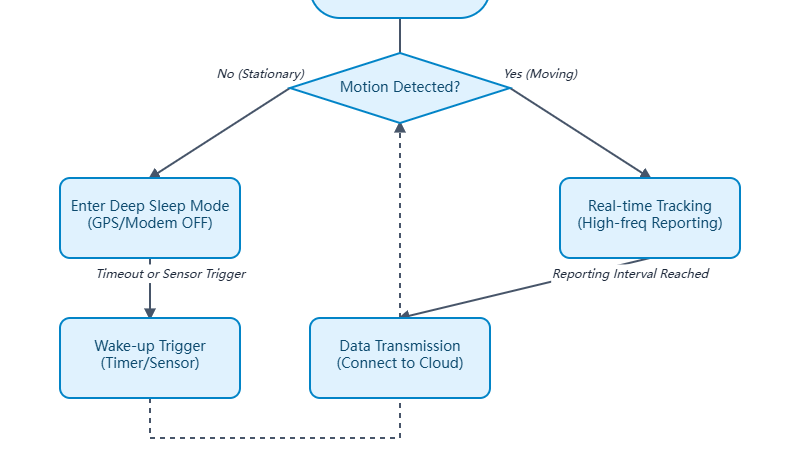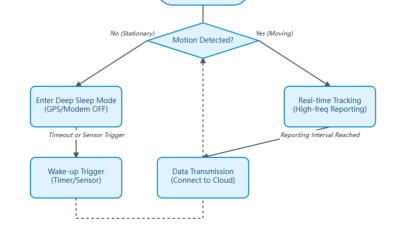
Introduction
Engineering excellence in IoT devices is key to bridging the gap between sensors at the edge and insights in the cloud. Eelink, as a veteran IoT hardware manufacturer, demonstrates this excellence through its meticulous device design, power-efficient algorithms, and support for a spectrum of communication protocols.
This in-depth overview dives into how Eelink builds its devices from the ground up – optimizing industrial design, minimizing power consumption, enabling over-the-air updates, and integrating with IoT networks and standards like MQTT, HTTP, Modbus, and CAN bus. We’ll also explore concrete use cases (cold chain tracking, fleet telematics, and container visibility) to see these technical features in action.
For IoT engineers, system integrators, and tech-savvy buyers, understanding Eelink’s approach offers insight into deploying reliable and future-proof IoT solutions.
Industrial Design Optimization: Rugged, Compact, and Purpose-Built
🔧 Form Factor and Environmental Engineering
Eelink places a strong emphasis on industrial design optimization – meaning every device is engineered to meet the physical and environmental challenges of its intended use.
Size vs. Functionality Balance:
- Compact Designs: Achieving small form factors without sacrificing durability
- GPT12-L Asset Tracker: “Smart and thin design” for covert applications
- Space-Optimized: Crucial for cargo tracking and equipment monitoring
Durability Engineering:
- Structural Design: Shock and vibration resistance for vehicle-mounted units
- Ingress Protection: IP65, IP67 or higher ratings standard
- Sealing Technology: Robust casings, gaskets, and component potting
- Weather Resistance: Operational in construction zones and harsh weather
📡 Thermal and RF Optimization
Internal Layout Engineering:
- Heat Dissipation: Strategic component placement to avoid thermal hotspots
- Antenna Tuning: GPS, cellular, and Bluetooth antennas optimized for maximum signal gain
- Metal Environment Performance: Reliable operation even when enclosed in equipment
- Wide Temperature Range: -20°C to +70°C operation through careful component selection
All these design optimizations result in devices that are “long-lasting and carry true build quality,” purpose-built to keep working reliably whether strapped to a shipping container crossing oceans or installed in a factory monitoring system running 24/7. Learn more about our manufacturing capabilities.
Ultra-Low Power Algorithms and Battery Management
⚡ Advanced Power Management
One of the toughest engineering challenges for IoT devices is power management – especially for battery-operated units expected to last months or years. Eelink tackles this head-on through innovative approaches:
Cellular Connectivity Optimization:
- LTE Cat M1 and NB-IoT: Low-Power Wide-Area (LPWA) technologies
- Duty Cycle Control: Optimized wake-up scheduling for data transmission
- eDRX and PSM: Power Saving Mode features for extended sleep periods
Adaptive Reporting Algorithms:
- Context-Aware Operation: Hourly reporting when stationary, real-time when moving
- Trigger-Based Activation: Motion detection and geofence breach responses
- GPT12-L Achievement: Up to three years standby time on a single charge
🎯 Context-Aware Power Management
Motion Sensor Integration:
- 3-Axis Accelerometer: Acts as a power-efficient sentinel
- Deep Sleep Mode: GPS and cellular modules powered down during stationary periods
- Instant Wake: Immediate activation upon motion detection
- Event-Driven Operation: Significantly extends battery life for intermittently moving assets
Multi-Sensor Power Budgeting:
- Intelligent Scheduling: Prioritizing which sensors to read and when
- Environmental Adaptation: Adjusting sampling rates based on stability
- Energy Conservation: Optimizing ADC usage and processing cycles
Hardware Efficiency:
- Ultra-Low Quiescent Current MCUs: Minimizing standby power consumption
- Efficient DC/DC Regulators: Optimized power conversion
- Smart Battery Protection: Health management and overcharge prevention
OTA Support: Remote Firmware Updates and Diagnostics
📡 Comprehensive OTA Capabilities
Over-the-air (OTA) update capability is critical for IoT devices in the field. Eelink has built robust OTA support ensuring remote management throughout device lifecycle.
Firmware Update System:
- FOTA Technology: Firmware Over-The-Air using cellular data
- Block Transfer: New firmware images delivered efficiently to flash memory
- Lightweight Protocols: TFTP and other optimized transfer methods
- Secure Updates: No physical access required for patches and new features
Fail-Safe Architecture:
- Dual-Partition System: Updates downloaded to secondary memory
- Verification Process: Checksum validation before firmware switching
- Fallback Protection: Bootloader backup prevents device bricking
- Continuous Operation: Device remains functional during update process
⚙️ Remote Configuration and Diagnostics
Dynamic Settings Management:
- Server-Side Commands: SMS, MQTT, and cloud API control
- Parameter Adjustment: Reporting intervals, geofence coordinates, sensor thresholds
- Fleet-Wide Updates: Overnight configuration changes without device recall
Health Monitoring:
- Diagnostic Reporting: Battery level, signal strength, GNSS status
- Remote Troubleshooting: Proactive issue identification and resolution
- Predictive Maintenance: Early warning systems for device health
Real-World Example: A cold-chain client needed custom temperature thresholds for new vaccines. Eelink’s team prepared a firmware update with new threshold logic and pushed it remotely to all devices. The entire fleet was updated within hours with minimal disruption to ongoing monitoring.
Source URL- https://www.eelinktech.com/blog/eelink-iot-engineering-design-low-power-connectivity/
Benefits of Professional Mold Inspection Services
Black mold may pose a lot of threat to both your health and property should it grow in you…




